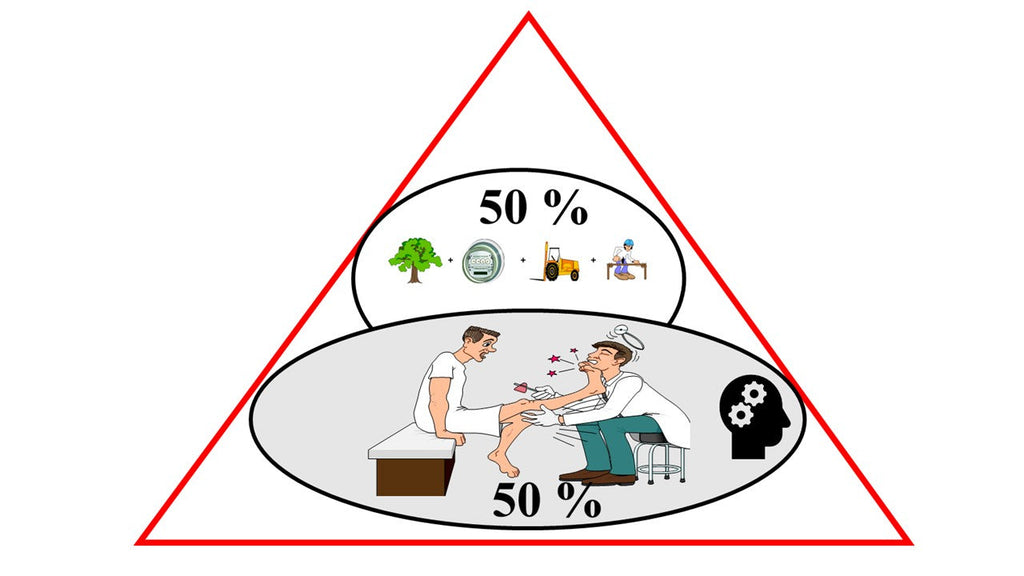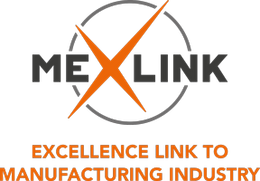Dividing Kaizen activities into different segments
Posted by PASI JULKUNEN

The Kaizen method is based on continuous improvement at all levels of the organization. Strategic changes by management, quality circles by teams and individual initiatives together create a systematic development culture. The initiative system ensures that improvement ideas are transformed into concrete actions that achieve efficiency, savings and a better working environment. Perhaps the biggest secret to success is that the initiative system is systematically managed and does not float around as a mandatory evil delegated to the quality organization without genuine commitment from management to lead it.
The Kaizen program can be divided into three segments (Masaaki Imai), depending on the complexity of the task to be performed and the organizational level at which it is carried out, and the number of participants. Figure 1 shows the relationship between these three segments as an enhancer of productivity development.

Figure1, Continuous improvement classification
At the top is Kaizen carried out by management , which focuses on improving the company's systems and practices, and the work results in visible new systems and improvements to the factory layout. Management must also participate in improving their work, which also leads to improved overall progress and work morale. The duration of the project is not specified.
The second is the Kaizen group, or quality circle , which focuses on improvements in the way work is done through small group work and the resulting new working standard or way of working. The working method is often a 10-step method following the PDCA cycle, the project duration is normally 2-4 months. The tools used are usually the Seven Quality Tools (Pareto Chart, Cause-Effect Diagram, Histogram, Control Chart, Scatter Chart, Various Graphics, Check Card) and the so-called New Seven Quality Tools (Relationship Chart, Affinity Chart, Tree Chart, Matrix Chart, Matrix Data Analysis Chart, Process Decision Making Chart (PDPC), Arrow Chart). Not all of these tools are used at the same time, but one or more are used in the same project. The work focuses on problems in a specific department in production, but the group members can be from different functions of the factory, as needed. Due to the duration of the projects, they are reviewed 2-3 times per department per year. The work is supported by small group activities and the Initiative System. The results for project participants include improved work morale, benefits and learning opportunities from participation, and the development of new skills. The work results in small incremental improvements and visible improvements.
Third is individual Kaizen, which is implemented through the A initiative system . The aim is to work more efficiently, but not with greater intensity. Since it focuses on the employee's own work cell, the possibilities for improvement are almost infinite, which is why all employees participate in this activity. This develops a positive attitude to bring about change, as well as to improve their own work and working conditions. Individual Kaizen acts as a morale booster, Kaizen awareness booster and personal competence enhancer because the company's management does not require immediate cost savings to be achieved as a result of the project. According to the way of thinking, the employee acts as a "thinking individual", i.e. the work that they have to develop and as a "performing individual", i.e. the work for which they are paid. A initiatives often focus on improving their own work, saving energy and materials, improving working conditions, improving the efficiency of machines and processes, improving tools and jigs, improving quality, improving occupational safety, etc. The tools are common sense and the seven quality tools. Time-honored improvements are small incremental improvements in a continuous flow, but sometimes also visible improvements. Because of this, these initiatives are said to act as the glue between two innovations, helping them maintain their productivity and also improve it.
Initiative system as an engine for continuous improvement
In order for continuous improvement to be carried out systematically and in a controlled manner, there must be A system that enables initiatives to be taken, recorded and followed up, such a system is called an Initiative System. Taking an initiative must be controlled so that anyone cannot change standards and working methods as they wish in the name of improvement. Therefore, the implementation of significant initiatives is monitored and controlled by people at different organizational levels and departments, through the initiative rotation system described below. An initiative reward is paid for implemented initiatives depending on several different factors, such as the creativity, novelty value, applicability elsewhere, whether the initiative is directed at one's own work cell or others, the position of the initiator in relation to the initiative, etc.
Initiative system To Japan originally introduced by the US Air Force and TWI (Training Within Industries). The Initiative System I present below is generally based on the principles of the automotive industry. The Initiative System (Suggestion System, Change Request System) is an integral part of Individual and Group Kaizen activities, it cannot be made to work properly unless an effective Kaizen program and structure is built as its engine. The American system emphasizes cost savings and the rewards paid for them, while the Japanese one emphasizes the morale-boosting benefits obtained through employee participation.
American Japanese
Areas for improvement Areas for improvement
-Quality improvement -Improving quality and performance
-Reduction of throughput time - Reduction of working hours
-Standardization -Improving occupational safety
-Improving performance -Improving office work efficiency
-Cost reduction -Material savings
-Depreciation of inventory value - Work space maintenance
-Something else -Environmental hygiene
-Something else
Evaluation criteria Evaluation criteria
-Cost/Part -Creativity, Originality, Adaptability elsewhere
-Necessary investment -Impact on quality improvement, occupational safety
-Yes, No, Wait -Appr., Pend., Rejected, comments
-Cost savings -Annual cost impact
Handling the initiative within the company
The automotive industry, which is probably one of the most dynamic industries, serves as a good Backmark. Yet initiatives and ideas are sought very systematically. Figure 2 shows the cycle of initiatives taken. in an automotive company and the options for action of the responsible persons in different departments when evaluating the initiative taken.
Procedures in the initiative cycle (Figure 2):

Figure 2. Example of an initiative process
The initiator fills out the initiative form . The initiator is an employee from the work cell or the head of the quality department. The form includes the part of the machine model to which the initiative is directed, part number and name, description of the change, publisher's name and date, reason for the change, cost of the part, amount of investment at the supplier or in-house factory, a more detailed description of the change including the current situation and the desired changed situation, the matter is clarified with a drawing if necessary.
The Kaizen Coordinator assigns a number to the original initiative . The initiative is sent to the Kaizen Manager for approval. The original initiative is returned to the Kaizen Coordinator, who records it in the Kaizen database along with a copy.
The initiative is also recorded in the Tracking System, which is intended to distribute the initiative for approval between different departments electronically. It contains all the information on the initiative form and the date the initiative was checked in, as well as the date the initiative was checked out for the next department receiving the initiative. Department-specific comments on the initiative are also possible in the space provided for this on the form.
Each evaluating department has a separately designated expert to evaluate the initiative, who signs the initiative after analysis and circles the appropriate option, the options are Yes, No, Waiting . If the answer is Yes, it is sent to the next department for analysis. The initiative's exit date must be recorded in the tracking system, which is also the next department's check-in date.
The standard maximum evaluation time in a department is a maximum of 3 working days. If more time is required for investigation, the initiative is put in the Waiting status with comments. Since the Waiting or No status breaks the chain from other departments, the initiative is returned to the Kaizen Coordinator with a clear reason why the Reject or Waiting status has been reached. In this case, the Coordinator sends a routine series of questions to the returning department inquiring about the more detailed reasons for the interruption or suggesting a follow-up meeting on the subject. This procedure ensures a deeper understanding of the reasons for the rejection.
All Kaizen initiatives approved by each department are returned to the Kaizen Manager for final processing and recording. The Manager reviews all initiatives. The Kaizen Coordinator organizes the implementation of the proposal together with the supplier or company department and records the initiative in the Kaizen database.
The initiative rotation described above only applies to initiatives achieved through Group Kaizen or those that generate savings made by a component supplier, as these are initiatives that create major improvements and require approval from multiple company departments. Individual Kaizen initiatives are also recorded, but their processing time is 1-3 days, so rotation is not organized. In Japanese companies, individual Kaizen initiatives account for over 90% of all initiatives.
Sandvik-Tamrock applied this system to the supplier community in strategic sourcing and the VA/VE organization , achieving annual savings of hundreds of thousands of Euros and significantly improved customer-supplier relationships.
Although organizational models changed and VA/VE as an organization disappeared in the turmoil of globalization of a large company, the spirit of Kaizen lived on and radiated among its experts. Pentti Enlund, Jouko Kuisma and Pasi Julkunen have successfully applied Kaizen methods in their supplier cooperation despite the change in organizational models, and this continues within the framework of MexLink as its own offering. A good example can be considered the manufacturing method developed by the undersigned, where before the change the time for installing parts on a machine was over 30 hours, but after the project, parts produced with the new method were installed in less than 10 minutes. On an annual basis, there is talk of savings of several thousand hours in the form of reduced machine assembly times.
If you can't find what you need on the market, change the market!
In my next article, I will discuss the third pillar of Lean, standardization, and its importance in a company, but especially in production.
Pentti Enlund
MexLink Oy
 English
English Finnish
Finnish Swedish
Swedish German
German

